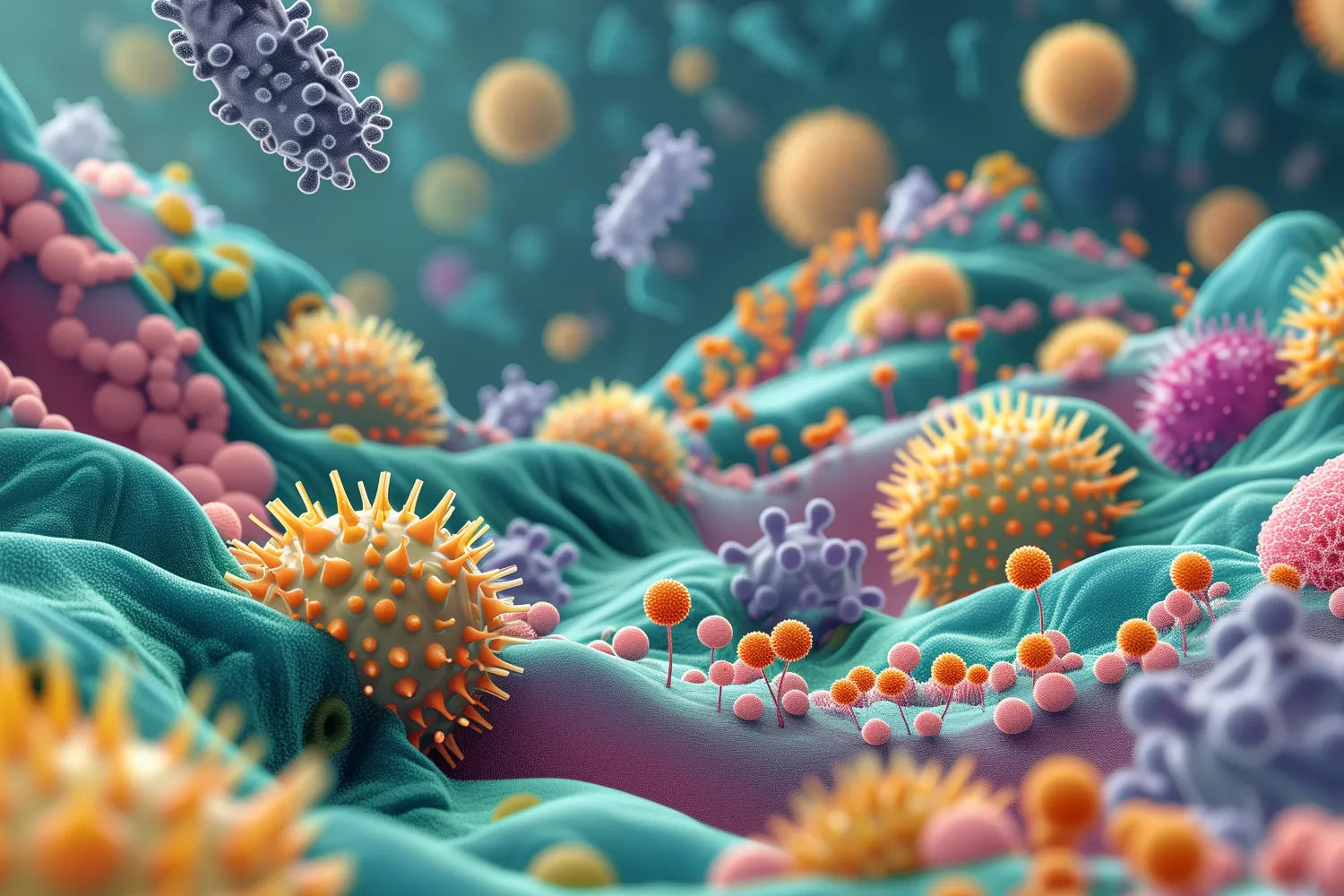
Dr. Eric Venn-Watson’s Highlights
“I’m just not able to keep up like I used to.”
We’ve all said it, and the older we get, the harder we find it to “keep up” with our kids, friends, or teammates.
Whether we’re on the court playing a pickup basketball game or training for a half marathon, sometimes it feels like our endurance is in a continual state of decline. Some of this could be lifestyle choices, but much of it has to do with the aging process.
Before you write off increased muscular endurance as something wasted on the young, let’s talk about what it is, what happens to muscular endurance as we age, and how we can not only sustain it, but increase it.
Defining Muscular Endurance
Muscular endurance is a two-sided coin. The first part is obvious: muscular endurance refers to the ability of your muscles to work continuously and repetitively without fatigue.
To be slightly more technical, it means your muscles must be able to withstand repeated contractions over an extended period of time.
The other side of muscular endurance is the strength your muscles have to perform the continuous task that requires the contraction. Muscular strength is how hard your muscles are able to work, or the load they are able to bear.
Strength differs from endurance, but strength is required for endurance. Strength, then, complements endurance.
When we talk about muscular endurance, we are talking about two different types of muscle fibers that work together to keep your muscles strong and working longer: fast twitch and slow twitch muscles.
Fast-Twitch
Fast-twitch muscle fibers help our muscles with tasks that require short bursts of energy. Sudden movements, actions that require strength for a short period of time, or rapid movements that are continuous but with breaks (like eyelids blinking) require fast-twitch muscle fibers.
Fast-twitch muscles control actions like blinking, Olympic weightlifting movements, short sprints, jumping, and agility training.
Slow-Twitch
Slow-twitch muscle fibers are the fibers most involved with muscular endurance. They are responsible for powering you through a marathon, causing your heart to beat, or riding a bicycle.
The way slow-twitch muscle fibers use energy is different from the way fast-twitch muscles use energy. Slow-twitch muscles use energy more slowly so that the activity you are doing can be sustained for a longer period of time.
Which Muscles Have Which Fibers?
Most of the muscles in your body have both fast and slow-twitch fibers, but some muscles and muscle groups have more or less of one or the other.
Calves and lower back muscles, for instance, are composed mostly of slow-twitch fibers, because they are constantly engaged with helping you keep your posture upright. The muscles that cause your eyelids to blink only have fast-twitch fibers
How To Increase Muscular Endurance
If you want to increase your muscular endurance, you must first understand why your endurance is declining. Besides obvious lifestyle reasons (lack of exercise, poor diet, and smoking) your muscular endurance will begin to decline with age.
Muscular Endurance in Your Cells
To understand why the decline happens, we have to go back to our cells. Our cells make up the tissues that make up the organs that make up entire systems in our bodies. Our cells are responsible for regulating our metabolism and ensuring the nutrients we eat are metabolized into energy.
That energy is then used by our muscles to power through workouts or other activities. As we turn another year older, our cells get older, too. Even if we take good care of our bodies, our cellular health may be on the decline.
When cells age, the mitochondria that support them and create energy can become sluggish. The cell membranes that protect the cells from external stressors become flimsy and weak. The result is cells that don’t function like they once did, and no amount of exercise will change them.
Thankfully, there’s a way you can support your cells and help work back toward muscular endurance at the same time.
Cardiovascular Exercise
It goes without saying that cardio exercise will help your muscular endurance. Going for a run and increasing your distance will help your muscles work longer. However, any marathon runner will tell you, speedwork is also necessary for increasing endurance.
Speedwork involves short sprints that help condition a runner’s muscles and heart to faster speeds, but those speeds translate into endurance on longer runs. It’s this combination of high and low intensity that produces the endurance needed for them to run a 26.2-mile marathon.
Strength Training
Strength training and resistance training both involve conditioning the muscles to work harder and bear heavier loads. This type of training increases muscle size, which can help build muscle tissue necessary for increased endurance.
Weight training causes micro-injury style stress to the muscles that cause them to repair stronger, additional muscle fibers. Strength training can also be combined with cardiovascular training. CrossFit or HIIT style workouts are a classic example of using both strength and cardiovascular training in one workout.
Improving Cellular Health
If you’re already covering your workout bases, the final step for improving muscular endurance is focusing on cellular health, a crucial component that is often overlooked by the average person just trying to keep the same 5k pace they had two years ago.
Ask any professional athlete and they’ll tell you, there’s a specific science involved with endurance, and cellular health is at the heart of it. Muscle cells need to be able to convert chemical energy to mechanical energy, and that can’t happen in cells whose mitochondria have essentially gone on lunch break.
Also important is the maintenance of cellular homeostasis. Functioning cells require strong cell membranes, good cellular signaling, and functioning mitochondria.
The solution that can help with these problems is surprising, because it comes in the form of a little-known saturated fatty acid, called pentadecanoic acid.
Elevate your cells. Elevate your self.
How Pentadecanoic Acid Supports Muscular Endurance
We’re a generation that has been told that fat is bad, but more recently, science has discovered that not all saturated fats are bad for us, some are even essential.
Pentadecanoic acid (also known as C15:0) has mounting evidence behind it (24 peer reviewed publications in 2021 alone, including from Harvardand Johns Hopkins) that support the benefits of C15:0. A paper published in Nature Scientific Reports proposes C15:0 as an essential fatty acid, the first to be discovered in 90 years.
For a fatty acid to be essential, it means our bodies need it to survive but can’t make it on their own.
C15:0 works to support your cells in three ways:* by supporting mitochondrial function, and strengthening cell membranes, and improving cellular signaling.
Mitochondrial Function
C15:0 supports mitochondrial function by increasing it up to 45%.* That’s some pretty big news for aging mitochondria. By keeping mitochondria functioning healthfully, cells are able to generate energy more efficiently.
Muscle cells that have more energy available to them and are better able to work of extended periods of time
Cell Membrane Support
Because C15:0 is a sturdy fatty acid, it’s able to get incorporated into cell membranes, integrating itself into the membranes and fortifying them against external stressors.* By keeping cell membranes sturdy, cells are less likely to succumb to external stressors, like free radical damage.
Muscle cells that have sturdy cell membranes can carry out cellular processes without interference, which can support muscular endurance in the body.
How To Get More C15:0
Pentadecanoic acid is found in trace amounts in full fat dairy products and some fish. As such, you may not be getting enough in your diet alone. It would be hard to get the amount of C15:0 you need from full fat dairy products without getting a lot of the not-so-good even-chain saturated fat at the same time.
There’s a solution. fatty15 is the once-a-day, vegan-friendly version of pentadecanoic acid (FA15™) that you can take to support your cellular health and keep your muscles firing on all cylinders.*
With fatty15, it’s easy to support your health on a cellular level.* And don’t worry, unlike other fatty acid supplements like omega-3 fish oil, there’s no fishy aftertaste or even fishier ingredients. Pure, FA15™ has no flavor or scent and simply works to help keep your cells healthy.*
With fatty15 and a healthy lifestyle, you can do more than increase your muscular endurance, you can help give your cells a fighting chance against aging-related cellular breakdown.*
Sources:
Increase in the proportion of fast-twitch muscle fibres by sprint training in males|PubMed
Maximizing Cellular Adaptation to Endurance Exercise in Skeletal Muscle|Science Direct

Eric Venn-Watson M.D.
CEO, Co-Founder
Senior Scientist, Co-Founder
Eric is a physician, U.S. Navy veteran, and Co-founder and COO of Seraphina Therapeutics. Eric served over 25 years as a Navy and Marine Corps physician, working with the special forces community to improve their health and fitness. Seraphina Therapeutics is a health and wellness company dedicated to advancing global health through the discovery of essential fatty acids and micronutrient therapeutics.
You May Also Like...
10 Foods Good for Your Liver: The Ultimate Guide
Your liver does a lot for you. If it had a voice of its own, it might ask you to eat more veggies and cut back on your Old Fashioneds. Unfortunately, the liver doesn’t receive a lot of attention until...
How To Improve Your Gut Microbiome: 6 Tips
Interested in how to improve your gut microbiome? We’ve got six tips to help your gut thrive and improve your overall digestion.


